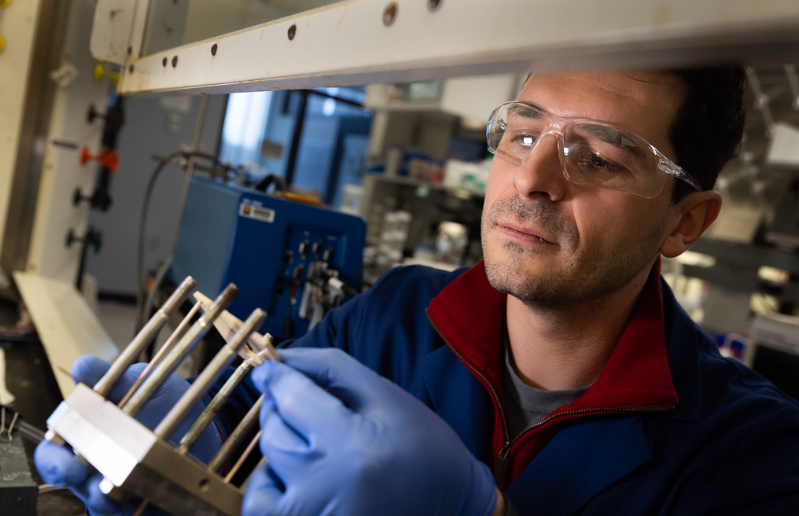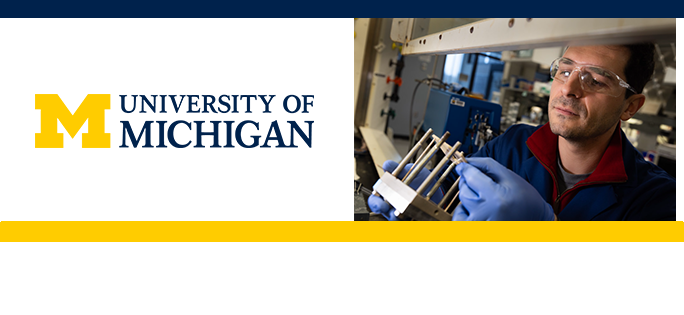 There’s plenty of water in the ocean, so how do we make it drinkable?
There’s plenty of water in the ocean, so how do we make it drinkable?
Jovan Kamcev, assistant professor of chemical engineering at the University of Michigan, determines the best process for desalination.
Jovan Kamcev develops technologies for affordable and sustainable water and energy, with a focus on membranes and sorbent materials for water treatment, energy storage, and energy generation. He earned his PhD in chemical engineering at The University of Texas at Austin. After graduating, he was further trained as a postdoctoral fellow at the University of California, Berkley. He grew up in New York City.
New Water Purification Technology
Turning seawater into drinking water could get cheaper and more energy efficient, thanks to a new technology developed in conjunction with Professor Menachem Elimelech from Rice University.
Our technology uses custom-made electrodes to remove boron from seawater using electricity. This is an important step of safely connecting the tap to the ocean. The boron concentration in seawater is around twice as high as the World Health Organization’s limits for safe drinking water, and it’s five to 12 times higher than the tolerance of many agricultural plants.
Unfortunately, boron sneaks through most reverse osmosis filters because it’s very small and chemically neutral in seawater. Conventional filters are designed to remove larger salts. To remove boron, desalination plants usually add base to give boron a negative charge, then perform another round of energy-intensive reverse osmosis. Afterwards, the base is neutralized with acid.
The extra treatment steps are costly, but with our new technology, desalination plants could skip them. Our electrodes remove boron by trapping it inside pores decorated with oxygen-containing structures. We still need to give boron a negative charge, and we do so by using a bipolar membrane to electrically separate water molecules into acid and base, eliminating the need for added chemicals. We are excited about this technology because the boron-trapping structures on the electrodes could also be modified to trap other drinking water contaminants, such as arsenic.

